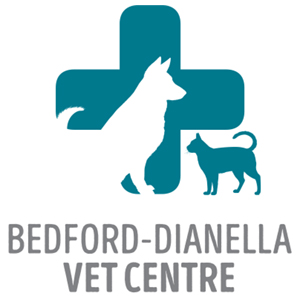



Pets are susceptible to foreign bodies such as grass seeds in the eye, while other injuries range from minor scratches to significant trauma from a motor vehicle accident or fights. Even minor injuries are extremely painful and often cause your pet to rub the eye, which usually makes it worse.
Any eye that is weepy or even partly closed should be checked by a vet before it progresses into something more serious.
Most conditions can be successfully treated using the correct medicated eye ointments, drops or antibiotic tablets; however, some problems may require surgical intervention.
Common eye problems to watch for:
Conjunctivitis is the result of a bacterial infection or it can indicate a more serious condition. It may affect one or both eyes and can occur at any age. Symptoms include: red, inflamed eyes, yellow or crusty discharge, rubbing at eyes, squinting or holding the eye closed.
Allergies to dust and wind can also cause inflammation in the eye, which then leads to conjunctivitis. In cats viruses can cause a recurring conjunctivitis which can be difficult to treat.
Cherry eye occurs when there is a defect in the tissue that usually anchors your dog’s ‘third eyelid’ (at the corner of the eye) in place but is not considered a genetic defect. Cherry eye is seen when the third eyelid prolapses out of position and appears as a pink, fleshy swelling that can occur suddenly and usually before 2 years of age.
The third eyelid provides nutrients and tear production to the surface of the eye. If it prolapses and isn’t repaired it can cause permanent damage to the eye. It can sometimes be manipulated back into position but there’s a high chance of a recurrent prolapse. When this occurs, surgery is the best treatment.
Cherry eye is mostly seen in Cavalier King Charles Spaniels, English Bulldogs, Lhasa Apso, Shih Tzu, West Highland White Terrier, Pug, Bloodhound, American Cocker Spaniel and Boston Terriers.
A corneal ulcer occurs when there is trauma such as a scratch to the clear surface of your pet’s eye (the cornea). It can occur in dogs and cats and is a medical emergency if it happens.
Symptoms include: squinting or a fully closed lid, clear or yellow discharge, or pain when you touch near your pet’s eye.
Treatment for ulcers will be successful if they’re caught early. On inserting a dye to highlight the ulcer, your vet will administer a local anaesthetic to the eye and may use a cotton tip to rub back the ulcer, to help promote healing. Antibiotic eye drops and/or anti-inflammatory tablets will help clear infection and ease the discomfort to your pet. The ulcer will normally heal within five days.
Entropion and Ectropion
Entropion: a condition of the eyelids which mostly occurs in dogs that are usually born with it. It’s an inversion or rolling in of the eyelids, which causes hairs to touch the cornea and result in constant irritation and pain. If not treated it can cause permanent damage to the cornea and even blindness.
Symptoms include: discharge from the eye, squinting or closing the eye, or eyelids that ‘roll’ inwards.
Entropion occurs most commonly in Sharpeis, Retrievers, Chow Chows, Rottweilers and Mastiffs and is usually seen in dogs less than 6 months old.
Surgery is the only treatment for entropion, to return the eyelid back to a normal position. In rare cases, dogs may need a second surgery to remove more tissue from the eyelids or may have to be referred to a specialist eye surgeon for the procedure.
Ectropion: the opposite of an entropion, it’s the outward turning of the lower lid. Many dogs have an ectropion which causes no problem; however, in some dogs, when the condition is more severe it causes debris (such as dirt and dust) to accumulate in the lower lid and result in inflammation and infection.
Surgery to repair and tighten the lower lid is the best treatment for ectropion.
We will respond within 4 hours or on the next business day.

CONSULTATIONS BY APPOINTMENT
Servicing areas including Morley, Inglewood, Mount Lawley, Bayswater, Bassendean, Mirrabooka, Noranda and Yokine.